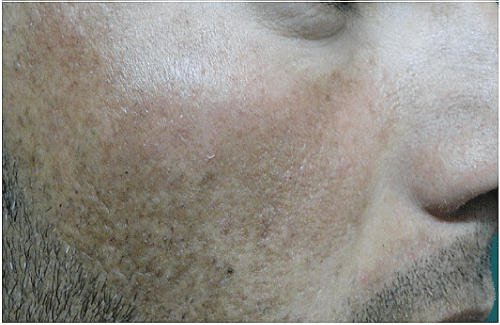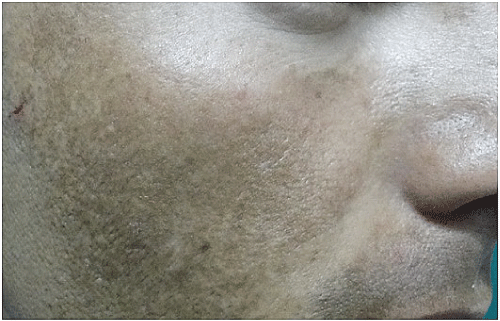Melasma, often referred to as chloasma or the “mask of pregnancy,” is a common skin condition that affects millions of people worldwide. It is characterized by patches of discoloration on the skin, typically appearing on the face. While it is not harmful or painful, melasma can significantly impact an individual’s self-esteem and quality of life due to its visible nature. Understanding the causes, recognizing the symptoms, and exploring treatment options are essential steps in managing this condition effectively.

What Is Melasma?
Melasma is a dermatological condition that results in brown or gray-brown patches on the skin. These patches most commonly appear on areas of the face that are frequently exposed to sunlight, such as the cheeks, forehead, bridge of the nose, and upper lip. The condition is more prevalent in women, particularly those with darker skin tones, and often occurs during pregnancy or in individuals using hormonal medications. Despite its prevalence, the exact cause of melasma remains unclear, though several contributing factors have been identified.
Causes of Melasma
The development of melasma is linked to a combination of genetic, environmental, and hormonal factors. Below are some of the primary causes associated with this skin condition:
Hormonal Changes
Hormonal fluctuations play a significant role in the onset of melasma. This is why the condition is often seen in pregnant women, where it is sometimes called the “mask of pregnancy.” During pregnancy, increased levels of estrogen and progesterone can stimulate the production of melanin, the pigment responsible for skin color. Similarly, individuals using oral contraceptives or hormone replacement therapy may also experience melasma due to hormonal imbalances.
Sun Exposure
Exposure to ultraviolet rays from the sun is one of the most significant triggers for melasma. UV radiation stimulates melanocytes, the cells responsible for producing melanin, leading to hyperpigmentation. This is why melasma often worsens during the summer months or in regions with intense sunlight. Even brief exposure to the sun without proper protection can exacerbate existing patches or trigger new ones.
Genetic Predisposition
Some individuals are genetically predisposed to developing melasma. If a close family member, such as a parent or sibling, has experienced the condition, the likelihood of developing it increases. Genetic factors can influence how sensitive a person’s skin is to hormonal changes and sun exposure, making them more susceptible to melasma.
Cosmetic Products and Skin Irritation
Certain cosmetic products or skincare routines can irritate the skin and contribute to melasma. Harsh chemicals, fragrances, or abrasive exfoliants may disrupt the skin’s natural barrier, leading to inflammation and increased melanin production. Additionally, some topical treatments or procedures, such as chemical peels or laser therapy, can inadvertently trigger melasma if not performed correctly.
Symptoms of Melasma
Melasma is primarily identified by its distinct visual characteristics. While it does not cause physical discomfort, its appearance can be distressing for those affected. Here are the key symptoms associated with melasma:
Patches of Discoloration
The hallmark symptom of melasma is the presence of brown, gray-brown, or bluish-gray patches on the skin. These patches are usually symmetrical and appear on both sides of the face. Common areas affected include:
- The cheeks
- The forehead
- The bridge of the nose
- The upper lip
- The chin
In rare cases, melasma can also appear on other parts of the body, such as the forearms or neck, but this is less common.
No Physical Discomfort
Unlike other skin conditions, melasma does not cause itching, pain, or irritation. The patches are purely cosmetic and do not pose any health risks. However, the psychological impact of having noticeable discoloration on the face can lead to emotional distress and reduced self-confidence.
Seasonal Fluctuations
Many individuals with melasma notice that their symptoms worsen during the summer months when sun exposure is more frequent. Conversely, the patches may fade slightly during the winter when there is less sunlight. This pattern can help differentiate melasma from other forms of hyperpigmentation.
Treatment Options for Melasma
While melasma can be challenging to treat, several approaches can help reduce its appearance and prevent further discoloration. Treatment plans are often tailored to the individual’s skin type, the severity of the condition, and their lifestyle. Below are some of the most effective treatment options available:
Topical Treatments
Topical creams and ointments are often the first line of defense against melasma. These treatments work by lightening the pigmented areas and inhibiting melanin production. Some commonly prescribed topical agents include:
- Hidroquinone: A skin-lightening agent that reduces melanin production. It is available in over-the-counter and prescription strengths.
- Tretinoin: A derivative of vitamin A that promotes cell turnover and helps fade dark patches.
- Corticosteroids: Anti-inflammatory agents that can enhance the effectiveness of other topical treatments.
- Kojic Acid: A natural compound derived from fungi that inhibits melanin production.
It is important to use these treatments under the guidance of a dermatologist, as improper use can lead to skin irritation or worsening of the condition.
Chemical Peels
Chemical peels involve applying a chemical solution to the skin to remove the top layers, revealing fresher, more evenly toned skin underneath. Peels containing glycolic acid, salicylic acid, or trichloroacetic acid are often used to treat melasma. While chemical peels can be effective, they require multiple sessions and should only be performed by a qualified professional to avoid complications.
Laser Therapy
Laser treatments are another option for addressing melasma, particularly for individuals who do not respond well to topical treatments or chemical peels. Lasers work by targeting and breaking down excess melanin in the skin. Some commonly used lasers include:
- Q-Switched Lasers: Effective for breaking down pigmentation without damaging surrounding tissue.
- Fractional Lasers: Promote collagen production and improve overall skin texture while reducing discoloration.
While laser therapy can yield impressive results, it is not a permanent solution, and multiple sessions may be required. Additionally, there is a risk of melasma recurring if proper sun protection measures are not followed.
Sun Protection
One of the most critical aspects of managing melasma is protecting the skin from sun exposure. Sunscreen is a vital tool in preventing the worsening of melasma and maintaining the results of other treatments. Dermatologists recommend using a broad-spectrum sunscreen with an SPF of at least 30, even on cloudy days. Additional sun protection measures include:
- Wearing wide-brimmed hats and sunglasses
- Avoiding direct sunlight during peak hours (10 a.m. to 4 p.m.)
- Using protective clothing to cover exposed skin
Lifestyle Modifications
In addition to medical treatments, certain lifestyle changes can help manage melasma. These include:
- Avoiding the use of harsh skincare products that may irritate the skin
- Maintaining a consistent skincare routine with gentle, non-comedogenic products
- Managing stress, as it can exacerbate hormonal imbalances
- Eating a balanced diet rich in antioxidants to support skin health
When to See a Dermatologist
If you suspect you have melasma or are struggling to manage the condition on your own, it is advisable to consult a dermatologist. A dermatologist can provide an accurate diagnosis and recommend a personalized treatment plan based on your specific needs. They can also monitor your progress and adjust treatments as necessary to achieve the best possible results.





